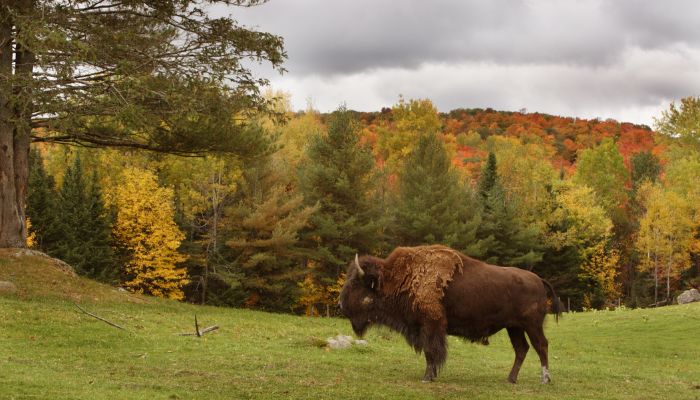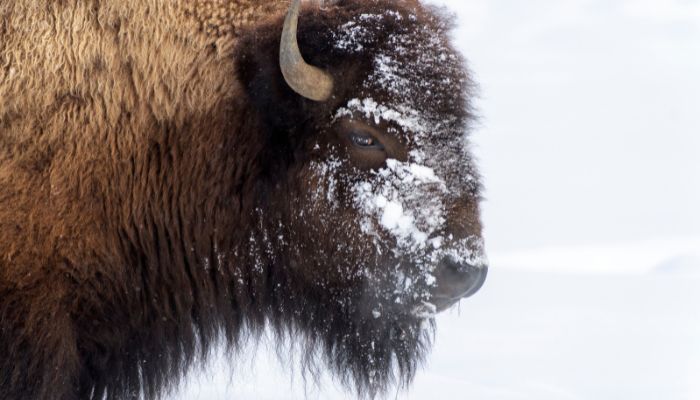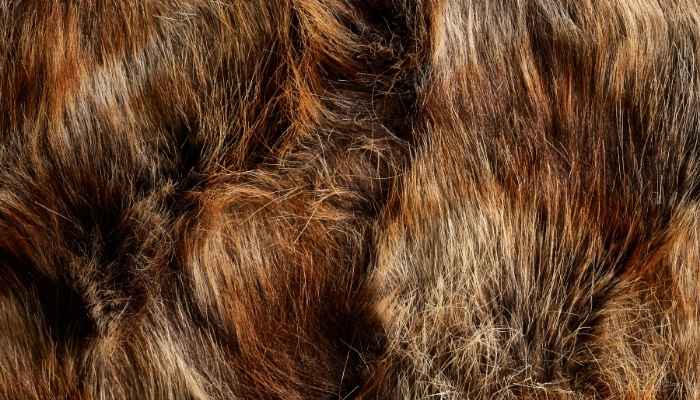Bison down fabric is made from the soft undercoat of American bison. This undercoat is harvested during the molting season, making it an eco-friendly and cruelty-free fiber.

Key Characteristics
- Softness: Bison down is incredibly soft, similar to cashmere.
- Warmth: It provides excellent insulation, making it ideal for cold weather.
- Lightweight: Despite its warmth, bison down is lightweight and comfortable to wear.
- Moisture-Wicking: The fiber has natural moisture-wicking properties, keeping the wearer dry.
- Durability: Bison down is strong and long-lasting, with a high resistance to wear and tear.
Uses of Bison Down Fabric
Apparel
- Sweaters and Cardigans: Bison down is used to make luxurious sweaters and cardigans, offering unparalleled warmth and comfort.
- Socks: Perfect for winter wear, bison down socks are warm, soft, and breathable.
- Hats and Gloves: These accessories made from bison down provide excellent insulation against the cold.
Outdoor Gear
- Blankets and Throws: Bison down blankets and throws are ideal for camping or as cozy additions to home decor.
- Scarves: Lightweight yet warm, bison down scarves are perfect for outdoor activities in cold weather.
Specialty Items
- Luxury Bedding: Some high-end bedding collections feature bison down for its warmth and softness.
- Crafting and Knitting: Bison down yarns are popular among knitters and crafters for their unique properties.
Features of Bison Down Fabric
Bison down’s unique structure traps air effectively, providing superior thermal insulation. The fine down component, in particular, offers exceptional warmth and softness, making it suitable for high-quality textiles.

Bison down is naturally hypoallergenic, making it suitable for people with allergies or sensitive skin. The harvesting process of bison down is sustainable and environmentally friendly. The bison are not harmed during the collection of the undercoat, which sheds naturally.
Comparison with Other Fabrics
| Feature | Bison Down | Cashmere | Merino Wool |
|---|---|---|---|
| Softness | Extremely soft | Very soft | Soft |
| Warmth | Excellent | Very good | Good |
| Weight | Lightweight | Lightweight | Lightweight |
| Moisture-Wicking | Yes | Yes | Yes |
| Durability | High | Moderate | High |
| Hypoallergenic | Yes | No | Yes |
| Eco-Friendly | Yes | Varies | Yes |
Sustainability of Bison Down Fabric
The collection of bison down is sustainable and does not harm the animals. The bison naturally shed their undercoat, which is then collected and processed. Bison down is a natural fiber, and it is biodegradable. Research by North Dakota State University has detailed the eco-friendly process of separating fine down from coarse hair of bison, emphasizing the sustainable practices involved in modern textile applications.

Studies show that bison down is not only biodegradable but also supports biodiversity through conservation efforts. Many companies that produce bison down products contribute to the preservation of bison habitats and populations.
Care and Maintenance
Washing
- Hand Wash: Use lukewarm water and a mild detergent. Avoid wringing the fabric to prevent damage.
- Machine Wash: If machine washing is necessary, use a gentle cycle with cold water and a delicate fabric detergent.
Drying
- Air Dry: Lay the fabric flat on a clean, dry towel. Avoid direct sunlight and heat sources to prevent shrinking.
- Tumble Dry: If using a dryer, select a low-heat setting and include a few clean tennis balls to maintain the fabric’s fluffiness.
Storage
- Dry Environment: Store bison down garments in a cool, dry place to prevent mold and mildew.
- Breathable Bags: Use breathable garment bags to protect the fabric while allowing air circulation.
Conclusion
Bison down fabric is a luxurious, sustainable, and high-performance material suitable for a variety of applications. Its exceptional warmth, softness, and eco-friendly properties make it an excellent choice for winter apparel, outdoor gear, and specialty items.
